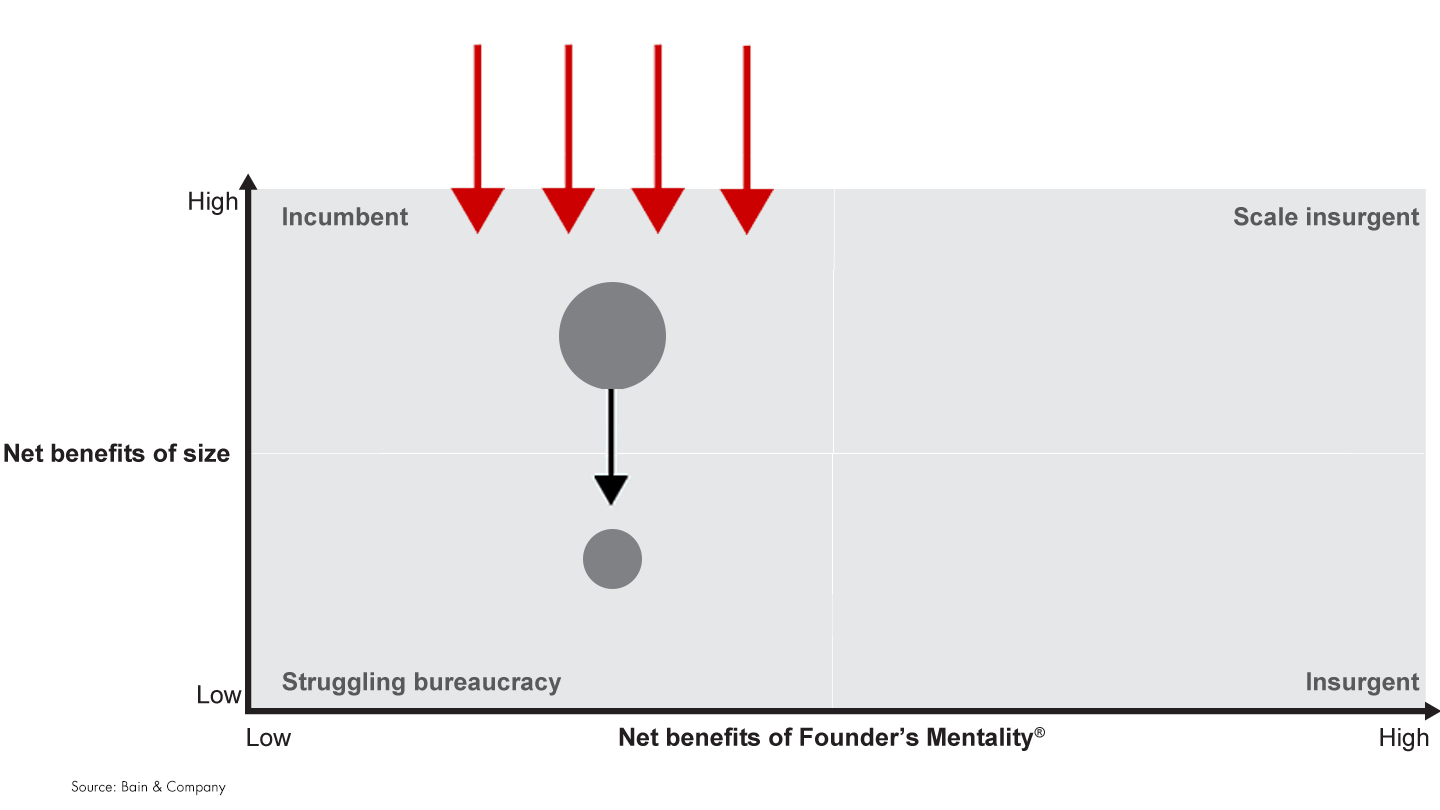Founder's Mentality Blog
The power of incumbency can be formidable for a company that remains focused on its core mission. But just as insurgent companies encounter a predictable set of forces that erode the Founder’s Mentality® as they grow, large multinationals struggle against forces that threaten to turn the power of incumbency into the pain of bureaucracy. We refer to those forces as the southward winds.

Managed well, an organizational matrix can be a powerful tool because it creates the right conflicts. In essence, the objective is simple: to ensure that competing company goals are represented and pursued and, when conflicts arise, they are resolved quickly. For example, one side of the matrix might represent local customer needs by tailoring products and marketing to local tastes. The other side might represent the benefits of scale by delivering common solutions that give customers the cost savings of scale and scope.
At times, these goals will conflict. The best organizations create the right conflict, at the right time, between divergent objectives, and they lay out a path to fast resolution. The end result, if all goes well, is a value proposition that allows companies to deliver the best of both worlds to their most important customers.

About the Founder's Mentality
The three elements of the Founder's Mentality help companies sustain performance while avoiding the inevitable crises of growth.
The issue is not the matrix itself. Rather, it is what happens when the the matrix is handicapped by multiple layers of management and slow decision making. As companies grow, each side of the matrix spawns span breakers who manage particular aspects of the business on behalf of the CEO, and the number of nodes—the points of interaction between these spans—proliferates. The “good” matrix conflicts get lost in decision-making processes that no one can figure out. Too often, nodes of interaction develop between middle managers guided by politics and "no-men" in the organization—the people at each node whose only job, it appears, is saying "no." The founder’s clarity—the notion that there are those who sell and those who support those who sell—gets lost in a sea of competing interests.
The simplest way to break through this dysfunction is to sharply divide the organization in two ways:
- Closely define whose job is to sell and whose job is to support those who sell
- Focus on delayering each side of the matrix (reducing the nodes of interaction) and increasing the speed of conflict resolution
The curse of the matrix is not the matrix in and of itself—it’s the organizational confusion and decision-making complexity that arises when you forget to prune and adjust the matrix as you grow.

Founder's Mentality®: The Southward Winds
Large multinationals often struggle against forces that threaten to turn the power of incumbency into the pain of bureaucracy.
Founder's Mentality®, Great Repeatable Models® and Repeatable Models® are registered trademarks of Bain & Company, Inc.
